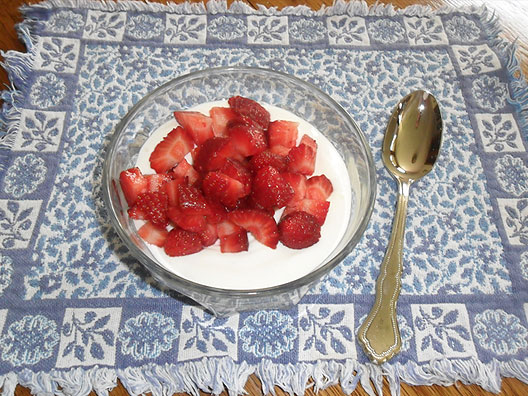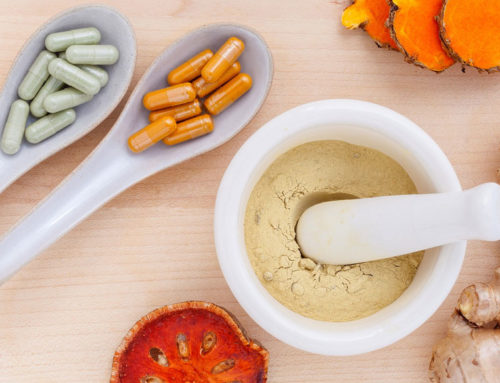As a typical middle child I have always sought to “maintain calm in the family” and be the peacemaker. As a physician, I was trained in a traditional way to view external bacteria as “bad” and something we protect our bodies from. Over the years, my perspective and the science on both approaches has evolved. Therefore, you might understand why as an integrative physician the idea of the synergy of the microbiome, or bacterial balance within our bodies of resident bacteria that is mutually beneficial appeals so much to me scientifically, medically and personally.
Approximately 100 trillion bacteria are living in our bodies: on our skin, in our guts, in our noses, in our mouths and in our vaginas (for women). I absolutely love a recent article in the New York TImes by Michael Pollan on the topic, entitled Some of My Best Friends are Germs.
In the article he reviews recent research on the microbiome and an approach to germs, probiotics and health. I especially love how he mentions a “Grand Unified Theory of Chronic Disease.” Yes, this whole idea of the microbiome as another organ in our bodies, but one which is dynamic and can be approached to help us feel better and live healthier, is very appealing and promising. Moving far beyond my initial medical training that had me look at systems of the body and our medical disease management system that trains specialists in the same approach, the microbiome complements the whole approach of integrative medicine using nutrition and mind/body/spirit on a holistic, personalized approach.
I have to admit that over the years I have been “sloppy” about my medical advice on probiotics. I didn’t really know about them. I knew they were good for you, and I casually told patients to take them when they were on antibiotics. I just didn’t know what specific advice to give. Some of you may not even know what probiotics are, how to get probiotics and how to keep your microbiome healthy. Start by reading this by the NIH. Others of you may be overwhelmed if you look at the options in a store. Probiotics are microorganisms that if given in adequate amounts, have health benefits for the host. They do come in yogurt, but also in multiple products sold as capsules, beverages, tablets and powders in the store. (not to be confused with prebiotics which are complex sugars which are fuel for the bacteria.) (often they are sold together in the same product)
In the past I was even a little skeptical because I was confused and knew of the potential for them to be abused in the dietary supplement commercialism and variable quality and claims of benefit. The research wasn’t “pure” and clear on the recommendations like it was for other evidence based protocols. But the evidence is evolving and becoming more robust everyday. The picture of how critical the microbiome is to our health is indisputable and it is not enough to just say “take probiotics.” It is important to look at the strain that is in the microbacteria of the product and see if that is the one researched for the microbiome imbalance issue you are aiming to address.
The NIH is pursuing research on the Human Microbiome Project and amazing researchers like Justin Sonnenburg at Stanford, whom I heard speak recently at AZCIM’s Nutrition and Health Conference, are furthering clarity on this topic. It is related to diabetes, asthma, obesity, eczema, gut illness, autoimmune illness, vaginal infections and so much more. The resident bacteria in our bodies have multiple functions. These include: regulating immune function and inflammation, affecting metabolism, supporting a mucosal barrier, improving how nutrients are used, preventing neoplastic or cancer causing changes and regulating bowel motility. These bacterial buddies of our bodies dance with what we eat in the environment of hopefully some good prebiotics so they can help prevent infection.
So, let me review in some real world situations why this is important and how probiotics and prebiotics are so relevant to our health. Much of the research for certain situations is showing that it is strain specific. The best we can do (after eating healthy, less processed, low sugar and only using antibiotic when necessary) is start with the information we have about specific probiotic strains.
C-sections and Breast Feeding: Babies born by c-section are not colonized with the same bacteria in their guts as babies born vaginally. The same goes for babies bottle fed instead of breast fed. The research of this impact on the microbiome is voluminous. We can’t always control those factors, but supplementation with probiotic is proving to be very helpful in those situations.
C Dif Colitis and Fecal Transplants: Ok, this may seems extreme and certainly warrants another blog post, but this potentially deadly colon infection is now being successfully treated with the extreme of a microbiome transplant. I think it certainly reinforces why caring for our microbiome is so important.
Bacterial Vaginosis: A woman with recurrent infections of overgrowth of garderella bacteria can benefit from probiotic. (lactobacillis GR-1 and RC-14)
Colds and Flu: Children in day care had less absences and illnesses using preventative probiotics. People had more protection against upper respiratory infections (prevention with lactobacillis gg, L, casei, L acidophilus, S. boulardii).
Inflammatory Bowel Disease (Crohn’s and Ulcerative Colitis) check out studies on VSL3. Irritable Bowel Syndrome, studies on VSL3, L plantarum and B.infantis. Gastritis (H-pylori) and Gastroenteritis showed the strongest evidence with Lactobacillus reuteri, L, rhamnosus, S. boulardi, and Bifidobacter.
Confused still? That’s why it’s good to talk to an Integrative Medicine Physician! I also like information at NCCAM, Consumerlabs.com and the Natural Medicines Database. The Arizona Center for Integrative Medicine also has a great handout that is on my resources page. Check it out.
Bottom line: Clean is good, sterile all the time is not. Antibiotics when needed are good, but the “balance” may need help to be restored. Our diets have a significant impact on us directly and in the 100 trillion bacteria that live in harmony with us. Keep the peace or find a way to restore it.







Leave A Comment